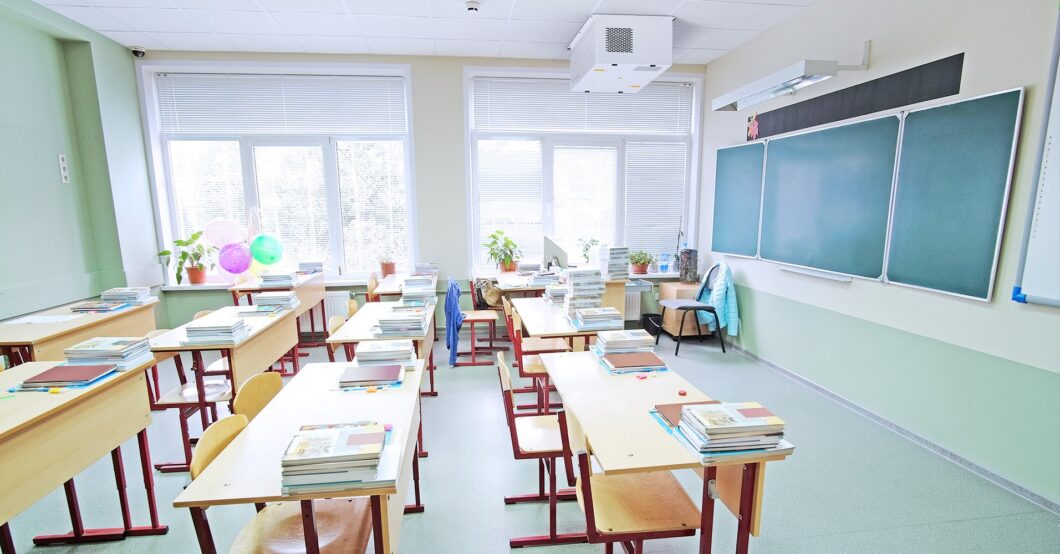School has just finished and we already want to talk about it? No time to catch your breath? No, because if we take a breath now, it will not be a sigh of relief what our youngsters will have to deal with in September. And we are not speaking about Covid, but about the quality of the general environment where students learn. Air pollution in schools and educational buildings, is an urgent issue to tackle immediately, so that headmasters can choose and prepare adequate solutions in time. And it may be that, in the very near future, families will choose for their children a school over another based on the quality of the air and the general environmental well-being offered.
What you will find in this article:
What does indoor air pollution mean at school?
Closed environments expose the people in them to numerous airborne pollutants, whose concentration, combined with the exposure time, directly affects the well-being and health of the people.
Indoor Air Quality refers to the quality of the air inside buildings including the presence and concentration of different types of pollutants and also the health and comfort of the people who live in the buildings. Recognizing and controlling common pollutants indoors can help reduce the risk of present or future health problems. The effects on health of indoor pollutants can, indeed, arise immediately or even years later. Specifically, indoor air quality is crucial for the most vulnerable subjects, such as children, who have an evolving immune system and breathe 12 to 20 times per minute by inhaling a higher quantity of air in proportion to their body weight, compared to an adult. Poor air quality in schools has numerous harmful effects on children and staff: it increases the spread of airborne diseases (such as Covid-19), worsens asthma, headaches, fatigue, nausea and skin rashes. It aggravates allergies, asthma and chronic diseases. It can impair learning and increase behavioral disorders.
What do you breathe in school
The air quality you breathe indoors at school is influenced by several factors:
- the air that comes from outside;
- specific internal sources of pollutants (furniture, construction materials, glues and paints, cleaning products, work devices such as printers and copy machines);
- ventilation and air conditioning systems that are not adequately cleaned and maintained;
- the presence of people who can carry viruses and bacteria, as demonstrated by the Covid-19 pandemic.
Some indoor pollutants can reach concentrations from 2 to 5 times higher than outdoors, with an important biological impact, even at low concentrations, in case of long exposures. There are many European projects which monitor indoor air quality in schools and all point out situations that need to be faced. For instance: “School Environment And Respiratory health in Children” (SEARCH) and “Health Effects of School Environment “(HESE) through environmental measurements and data on respiratory health highlighted a bad IAQ in Italian schools due to the high levels of PM10 and CO2 caused by the absence of adequate ventilation and showed effects on the respiratory health of children.
Sanitisation and air purification in schools
Opening windows to ensure periodic air exchange, cleaning and disinfecting have been the main precautions recommended by the institutions to improve indoor air quality in schools. This is important but not always sufficient, and sometimes difficult to do. Keeping the windows open in winter, for example, has made daily lessons complicated and strenuous, therefore, complaints have been made from the students and parents.
How is it possible to ensure a constant and continuous exchange of air then, and completely sanitise the surfaces and room during lessons, without contraindications and side effects for students and teachers?
In Jonix we have developed no-touch sanitisation systems particularly suitable for densely populated environments such as schools since, thanks to the constant and prolonged action of Jonix Non-Thermal Plasma technology, which acts on pollutants, including Covid – 19 *, they make the air healthier while these spaces are being used.
Many schools have decided to take advantage of our devices, with over 3,000 devices installed in school facilities around the world.
The presence of these devices has made it possible to continuously sanitise air, objects and surfaces, also preventing infections from Covid-19 and significantly reducing the absences due to illness of students, teachers and staff.

